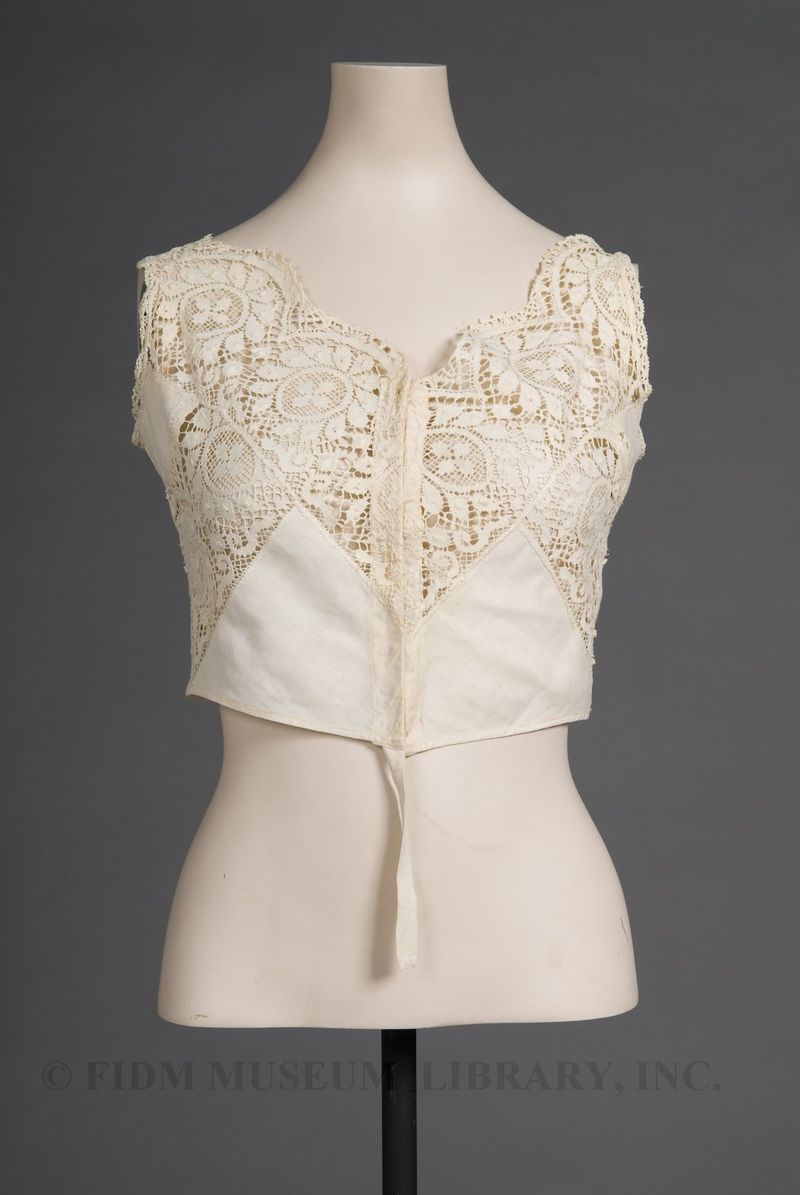The brassiere appeared on the fashion scene about 1904 or 1905. Of course, women wore brassiere-like garments before this date, but they went by other names depending on the time and place in which they were worn. In the 19th century, these garments were called bust supporters, breast girdles or bust corsets. During the second half of the 19th century, these garments were worn by a minority of women, primarily dress reformers, who felt that the tight fit of a corset was too restraining. The majority of women continued to wear corsets until the very late 19th and early 20th century, when the brassiere and its forerunners became popular among European and American women.
The term brassiere was first used in advertising copy by the Charles R. De Bevoise Company in 1904 and included in a 1905 patent by Gabrielle Poix. In French, brassiere referred to a child's vest or undershirt and/or a woman's bodice. Both Poix and De Bevoise probably borrowed this French word to bestow a certain cachet on their product, which was a wise marketing move. Who wouldn't prefer wearing a brassiere over a breast girdle? During the 1930s, brassiere was shortened to bra, the term still in use today.
 Parisiana Brassiere
Parisiana Brassiere
1908-1910
Gift of the Manlove Family
2006.870.23
Early 20th century brassieres were more like today's camisole than a contemporary bra. Usually made of utilitarian white or off-white cotton, they lacked elasticity. These earliest bras weren't intended to define and separate the bust, rather, they were worn to help create a smooth, unbroken line from shoulder to waist. Decoration, if any, consisted of inserted lace or embroidery. They were typically paired with a short, waist restricting corset which ended below the bustline. Women with larger busts were particularly encouraged to wear a brassiere, as a shorter corset didn't support the breasts. In 1910, the New York Times praised the light-weight brassiere for a variety of reasons: "it is more comfortable than an extra stiff, tight corset; one can have a variety of them and put them on freshly, and they can be worn instead of corset when one is in negligee."1
In 1908, a Los Angeles Times fashion writer answered the question, "What is a brassiere?" in response to a reader query. According to the writer, a brassiere is a "smooth fitting and slightly boned garment" to be worn with a short corset.2 The reader can't be blamed for her confusion, however, as several times between 1908-10, Harper's Bazaar used brassiere to mean to a short, sleeveless over-bodice, often embroidered or beaded. Though it's tempting to think of this usage as an early example of underwear as outerwear, it probably referred to the correct French meaning of brassiere, a woman's bodice.
Like the manufacturers who first called their bust supporter a brassiere, the makers of this brassiere wanted to capitalize on the relationship between Paris and style. A twill tape label stamped with the name Parisiana Brassiere hangs from the hook-and-eye fastener. There is no indication whether it is the style name or the manufacturer.
1 "The Newest Style in Corsets." New York Times. 27 Mar. 1910: X4.
2 Ford, Sydney. "Facts, Features and Fancies for Women." Los Angeles Times. 4 Feb. 1909: II7.



